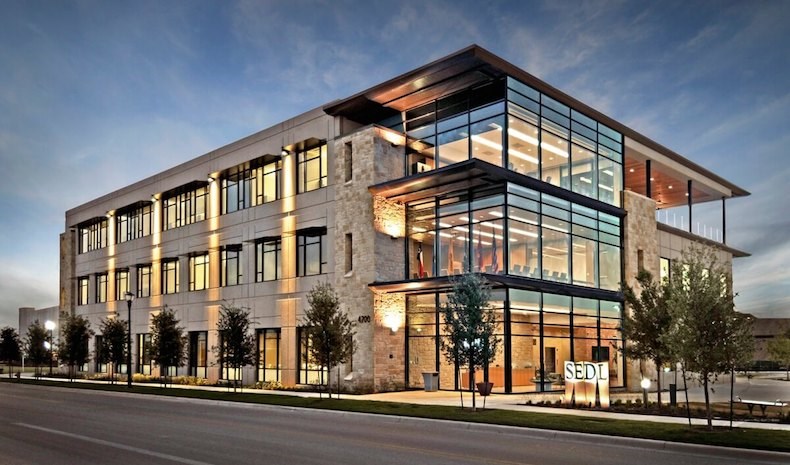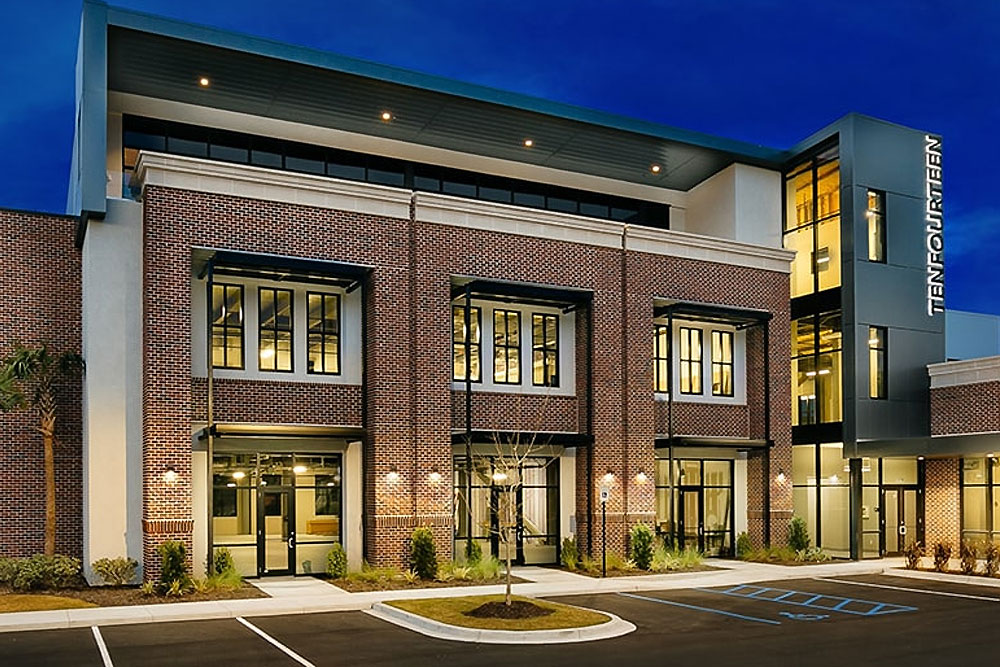Introducing the Comprehensive Solutions Supplied by Commercial Architects for Modern Advancement
Commercial Architects offer a crucial feature in modern development tasks. They blend layout visual appeals with performance while sticking to regulative needs. Their knowledge extends beyond mere building and construction, integrating lasting methods and innovative technologies. As they browse complicated zoning regulations, Architects team up with various stakeholders to bring visions to life. This complex strategy elevates questions concerning the advancing function of Architects fit contemporary rooms and the effect of their job on future advancements.
Understanding the Role of Commercial Architects in Modern Developments
In modern metropolitan landscapes, Commercial Architects play a vital role fit useful and visual spaces that meet varied business demands. Their experience prolongs past plain layout; they navigate complicated zoning laws, developing codes, and ecological regulations. By collaborating with customers, they recognize specific demands, making certain that each job straightens with the client's vision while also thinking about sensible aspects such as sustainability and cost-effectiveness. Commercial Architects are experienced at incorporating innovative innovations and products right into their styles, boosting both the performance and energy effectiveness of buildings. They perform detailed website evaluations to evaluate the prospective difficulties and possibilities presented by a location. Additionally, efficient interaction with service providers and various other stakeholders is essential, making sure that the job advances smoothly from perception to completion. Ultimately, Commercial Architects contribute in creating spaces that not only meet functional functions however also add to the total character and vibrancy of metropolitan environments.
Idea Style: Transforming Concepts Into Truth
Concept style functions as a crucial phase in Commercial style, where innovative layout solutions arise from imaginative brainstorming. This procedure counts on collaborative ideation, bringing with each other varied viewpoints to refine and improve preliminary concepts. As concepts take form, they change from abstract notions right into concrete architectural facts.
Cutting-edge Style Solutions
Transforming concepts into reality is the hallmark of ingenious layout services in Commercial style. These services mix creative thinking with functionality, addressing the distinct needs of modern advancements. By leveraging innovative technologies and sustainable techniques, Architects craft areas that are not only visually appealing yet also efficient and versatile. Emphasis on user experience drives the design procedure, guaranteeing that atmospheres foster efficiency and partnership. Each project take advantage of a customized method, where principles are meticulously developed to show the client's vision while taking into consideration future fads. Innovative style solutions likewise prioritize versatility, enabling for alterations over time as company demands evolve. Ultimately, these strategies enhance the overall value of Commercial areas, making them essential in today's competitive landscape.

Joint Ideation Process
Cooperation functions as the foundation of the ideation process in Commercial style, cultivating creativity and development among varied stakeholders. Architects, clients, designers, and neighborhood participants participate in vibrant conversations, guaranteeing that all point of views are considered. This inclusive approach permits for the exploration of various layout concepts, encouraging one-of-a-kind services that align with the project's vision. Via workshops and conceptualizing sessions, ideas progress and improve, transforming initial ideas right into substantial layouts. Technology additionally plays a critical duty, with tools such as Structure Details Modeling (BIM) promoting real-time cooperation and adjustments. Ultimately, this collective ideation procedure not only boosts the layout end result yet also cultivates a sense of ownership and investment amongst all celebrations included, resulting in successful Commercial advancements.
Zoning Evaluation: Browsing Laws and Compliance
As programmers start on brand-new jobs, understanding zoning laws is necessary to making certain conformity and avoiding pricey hold-ups. Zoning evaluation plays a crucial function in this procedure, as it includes reviewing regional zoning laws that determine land use, developing height, density, and setbacks. Commercial Architects have the know-how to navigate these intricate regulations, helping clients identify allowable usages and any kind of essential variances.
Lasting Layout Practices: Building for the Future
Sustainable layout practices are significantly crucial in the domain of Commercial architecture, especially as ecological concerns continue to rise. Architects focus on green products, energy-efficient systems, and design methods that reduce waste and ecological influence. Incorporating renewable resource resources, such as solar panels and wind generators, enables buildings to produce their very own power and minimize dependence on fossil fuels.Furthermore, lasting layout highlights the importance of indoor environmental top quality. This consists check this site out of utilizing natural light, enhancing ventilation, and selecting safe materials to enhance owner health and productivity. Environment-friendly roof coverings and living wall surfaces are also popular functions that add to biodiversity and urban cooling.Additionally, Commercial Architects frequently incorporate water conservation methods, like rainwater harvesting and drought-resistant landscape design. Via these innovative techniques, they produce rooms that not just satisfy modern demands but likewise promote a sustainable future, attending to the expanding demand for liable development in the modern-day world.
Job Administration: Ensuring Timely and Effective Implementation
Efficient project management is necessary for making certain that Commercial architecture jobs are completed on schedule and within budget. This function encompasses a range of duties, consisting of the coordination of numerous stakeholders, timelines, and sources. Commercial Architects utilize their experience to develop in-depth task plans that lay out important landmarks and deliverables, permitting organized progression tracking.Regular interaction amongst staff member and clients is vital, cultivating transparency and helping with timely decision-making. Risk administration techniques are likewise utilized to determine prospective challenges early, allowing aggressive services to be created. By using innovative task monitoring devices, Architects can keep an eye on job performance in real-time, making modifications as required to maintain performance.
Interior Design: Producing Practical and Aesthetic Rooms
Interior decoration plays an important function in improving both performance and visual appeal within Commercial areas. Reliable room preparation can enhance operations and improve customer experience, while visual style principles add to an aesthetically enticing environment - commercial architects. Together, these elements produce rooms that are not just functional but additionally motivating
Area Preparation Effectiveness
While maximizing the energy of readily available room, Commercial Architects prioritize room preparation effectiveness to produce both functional and cosmetically pleasing environments. This method entails careful evaluation of why not check here the spatial layout to guarantee suitable use of every square foot. Architects think about variables such as process, ease of access, and natural light to improve usability. By strategically positioning furnishings, equipment, and workstations, they assist in motion and interaction amongst customers, advertising performance. Additionally, zoning different locations for specific features aids in managing sound and personal privacy, producing an unified atmosphere. With efficient room planning, Commercial Architects can change restraints into opportunities, making certain that each area fulfills the diverse demands of its occupants while sticking to regulative requirements and market standards.
Aesthetic Layout Concepts
Visual design principles play an important role fit settings that are not just useful yet also visually attractive. These principles assist Commercial Architects in developing rooms that resonate with customers while improving brand name identification. Crucial element include balance, percentage, and harmony, which function together to develop a cohesive link look. Color pattern and materials are meticulously selected to stimulate wanted feelings and sustain the overall style. Additionally, lights plays a critical function, affecting mood and presence while highlighting architectural features. By incorporating these principles, Architects ensure that spaces are not just useful but also inviting and inspiring. Eventually, efficient aesthetic layout cultivates a favorable customer experience, urging engagement and satisfaction in Commercial atmospheres.
Partnership With Stakeholders: Fostering Effective Collaborations
Effective partnerships in Commercial style hinge on efficient collaboration with stakeholders, making certain that every voice is heard and valued. This collective technique involves engaging various events, consisting of customers, professionals, and neighborhood participants, throughout the layout and growth process. By fostering open communication, Commercial Architects can deal with problems, gather understandings, and line up the task's vision with stakeholder expectations.The combination of varied point of views boosts imagination and advancement, leading to even more useful and visually pleasing styles. Normal conferences, feedback sessions, and workshops promote this discussion, allowing Architects to adjust their plans in response to stakeholder input. Additionally, establishing depend on with openness and accountability reinforces these partnerships, causing a smoother task execution.Ultimately, the success of modern-day advancements depends upon the Architects' ability to browse and balance varying rate of interests, producing a collective atmosphere that advertises shared objectives and common success.
Frequently Asked Concerns
How Do Commercial Architects Take Care Of Spending Plan Constraints During a Job?

What Kinds of Software Do Commercial Architects Frequently Use?
Commercial Architects commonly use software such as AutoCAD for composing, Revit for Structure Information Modeling, SketchUp for 3D modeling, and project monitoring devices like Microsoft Job to boost partnership and simplify operations throughout the design process.
Can Commercial Architects Aid With Getting Financing for Projects?
Commercial Architects can assist in acquiring financing for tasks by preparing comprehensive propositions, aiding to express style visions, and providing economic forecasts that can enhance the chance of protecting necessary financing from investors or monetary institutions.
Just How Do Architects Make Sure Safety And Security Throughout the Construction Process?
Architects assure safety throughout construction by applying rigorous design standards, coordinating with designers, performing regular site inspections, sticking to regional policies, and cultivating communication among all stakeholders to alleviate risks and promote a safe and secure functioning environment.
What Recurring Assistance Do Architects Provide After Task Conclusion?
After job completion, Architects supply recurring support through maintenance consultations, efficiency evaluations, and layout modifications. They ensure structures meet progressing needs, address potential problems, and keep conformity with policies, fostering a long-term partnership with clients.